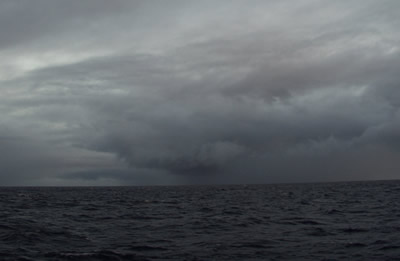Click on image for full size
National Weather Service Forecast Office of Topeka, KS
Sleet and Freezing Rain
Sleet forms when a partially melted snowflake or raindrop turns back into ice as it is falling through the air. This happens when there are different layers of air beneath the cloud and these layers have different temperatures. In this case, if sleet started out as a snowflake, the layer right below the cloud was a cold (below freezing) layer of air. If the sleet started out as a raindrop, the layer of air below the cloud was warm (above freezing). As the raindrop or snowflake falls through the clouds, it travels through the next layer which is above freezing. The raindrop simply stays a raindrop, but the snowflake starts to melt. This journey continues for the raindrop and melting snowflake, and they travel into the next layer of air, which has below freezing temperatures. This last layer causes the raindrop to start to freeze and the melted snowflake to refreeze.
Sleet is usually tiny clear ice pellets that bounce when they hit the ground. An ice pellet is about 0.2 inches (5mm) or less, which is smaller than hail. Heavy sleet is quiet rare, but it is defined as a ground accumulation of ½ inch (12.7mm), according to the National Weather Service.
Freezing Rain happens when raindrops fall in liquid form and immediately freeze as they hit a cold surface. The process for freezing rain is similar to the process for sleet except there are differences in the last two layers. Freezing rain travels through a deeper layer of above freezing temperatures than sleet. Then the last layer that the raindrop and melted snowflake travel through to create freezing rain is rather small. This small layer makes the raindrops extremely cold, thus when they hit a surface they freeze on contact. In this case, the ground level will have been below freezing for at least few hours if not several days.
Freezing rain causes highways or roadways to be like ice skating rinks for automobiles. Freezing rain can create an accumulation of ice on objects on the ground. The weight of this accumulation of ice can damage branches, power lines, and telephone cables. In January 1998 an ice storm or freezing rain storm hit northern New England and Canada and left millions of people without power in their homes.
Freezing Rain is classified as freezing drizzle if the diameter of the raindrops is less than 0.02 inches (0.5mm). Freezing drizzle starts out in liquid form unlike freezing rain, which starts as a raindrop or snowflake.














